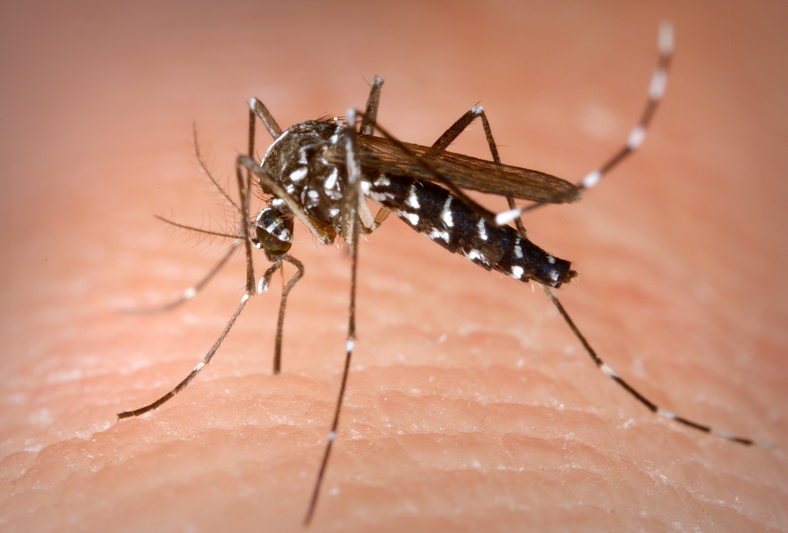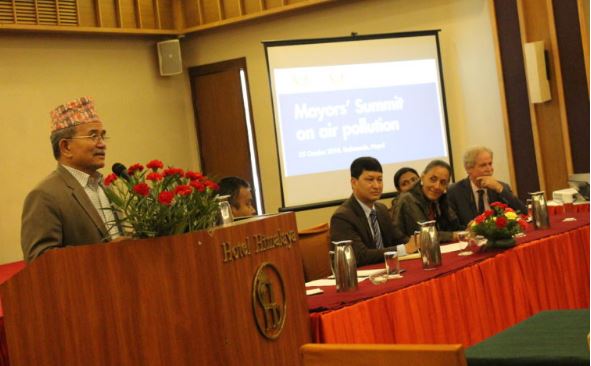The Ecological Cost of Facemask
- Nature Khabar


Bindu Poudel (name changed), a 23-year girl from Sandhikharka Arghakhanchi, wanted to dispose the N-95 mask she wore safely on the way to market but couldn't find the covered trash bin. Anyway, she threw that mask in an uncovered trash bin, after a while a street dog came up and started going through that trash and spilled its content all around. Then trash along with the mask got in the rainwater drainage and reached the stream nearby.
Above-mentioned example is one of the many ways how face masks, rubber gloves, and other single-use plastics including bottles of sanitizer, face shields may end up in places we don't want them to be.
With the raging fire of the COVID-19 pandemic, face masks and other personal protective equipment have become the new normal. With an escalation in the spread of COVID-19, the demand for face masks, gloves, and other protective equipment have been skyrocketed. According to a recently published report of WHO, the demand for protective gear has spurred by 100 folds of the level before the pandemic outbreak. With exponentially growing demands and depleting global stocks, producers of such gears are struggling to meet the demands resulting in an upsurge of the price of protective equipment. Manufacturers around the globe are increasing their capacity to make face masks and other protective gear. Authorities from China claimed factories producing such goods are running at 110 percent capacity, also some major manufacturers of China like BYD (carmaker), Foxconn, China Petroleum and Chemical started to produce face masks. Regardless of these enormous efforts to fulfill the hunger of protective gear globally, the price has been increased by 20 times their usual prices as reported by WHO.
The uprising demand and production of protective gear have not only created a new ripple in the global economy but also bought a whole bunch of problems. The never-ending problems associated with such protective equipment start with the collection of raw materials and continue even after the disposal. As most of these protective gears like surgical face masks, respirators, face shields, bottles of sanitizer are made up of plastic-based water-resistant fiber of polypropylene, polystyrene, polycarbonate, etc, they leave a considerable ecological footprint from the beginning of the supply chain to the end of it. According to a study conducted by Eco chain, the carbon footprint of an N95 respirator is equivalent to 0.05 kg of CO2, which may seem like a negligible amount but with billions not millions of such respirators this will certainly be an issue to look after.
The impact of such protective gear on human life and nature continues after their use too. Initially, the face mask used and abandoned to be disposed in the proper place and thrown wherever has a primary chance of spreading the pathogens itself to those who handle the trash as it is well known that the virus can remain virulent on plastic surfaces of surgical mask for seven days.
In a country like Nepal, with only a limited number of sanitary landfill sites, where most of the cities dump their waste in places near the river or directly into it. The traces of disposed face masks and other protective gears ultimately end up in the ecosystem, mainly on the aquatic ecosystem which then intertwines into various food-webs causing a bigger disruption on the global ecosystem. But so-called first world countries are also not immune to this problem, and the impacts are already on the show.
With the rise in demand for the surgical face masks and the gloves, for medium to long-term, the discarded masks can disrupt the delicate balance of the ecosystem. Especially the litter being disposed of in the water sites can adversely affect the quality of water as well many animals cannot distinguish between the prey and mask and can make a lethal effect in the food chain whereas many animals get entangled with it.
It is estimated that plastic has a lifetime of (20-600) years. After which also there is no complete decomposition, they turn into smaller pieces called microplastics and at the end may convert into toxic chemicals. The toxic chemicals may get mixed with the abiotic factors of the environment generating harmful effects. Just one mask can produce millions of particles, each with the potential to also carry chemicals and bacteria up the food chain and potentially even into humans. Plastic waste flowing into our oceans could triple by the next 20 years to 29 million metric tonnes. If every person used a single-use face mask a day for a year, it would create an additional 66,000 tonnes of contaminated waste and 57,000 tonnes of plastic packaging, which in turn suffocates the ocean, strike a blow to marine life and eventually create havoc.
We agree that these protective gears made up of single-use plastic are abominable for the ecological health of the planet, but we mustn't overlook the health and safety of human beings. Like always, we should ponder to find an effective way to reside the impacts of the face- masks and other protective gear without putting human life in jeopardy. Use of other non-medical masks (also known as fabric masks, home-made masks, DIY masks), frequent hand washing, social distancing can be a potent alternative to protective gear made from single-use plastic especially for the general public. We can also develop reusable protective equipment with the same safety standards to be used by health and essential workers working on the frontline. Although masks made from common fabrics like cotton have a higher carbon footprint on production than the single-use surgical masks, the washable, reusable, and decomposable characteristics make cotton masks eco-friendly than other types of masks. Updated mask guidance document of WHO also suggests that for the general use non-medical masks are also effective when used properly jointly with social distancing and frequent hand washing.
According to a recent working paper by the Plastic Waste Innovation Hub at University College London, the current domestic demand for the UK can be dropped dramatically to 136 million masks per year from 24.7 billion a year– if only reusable masks are used, which reduces the total production of waste created by face masks.
As reported by, head of the Philippine Fiber Agency, Kennedy Costales, fibers of the Abaca tree can be a suitable replacement to plastic fibers in making face masks and protective gowns. While as durable as polyester Abaca fibers were previously used to make banknotes, tea bags and decomposed within two months. So, protective gear made from such eco-friendly fibers can be another weapon to combat the impacts caused by improper disposal of protective gear.
In the endnote, it's a truth that, using protective gear to ensure the safety of human life is a must but we can't ignore the ecological wellbeing of the planet. Thus, we must find a way that is more sustainable and ecologically sound to tackle this hardship bought by the pandemic. And only with the collective efforts we can win this battle and make our planet a healthier, greener, and happier place to live in.
(Writers are currently pursuing B.sc. Forestry in Institute of Forestry, Tribhuvan University)





Feedback